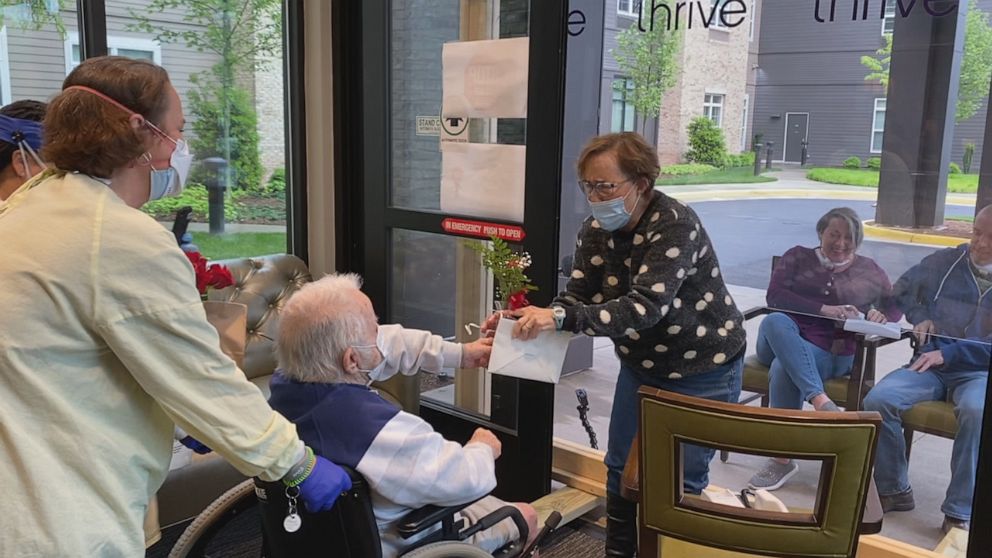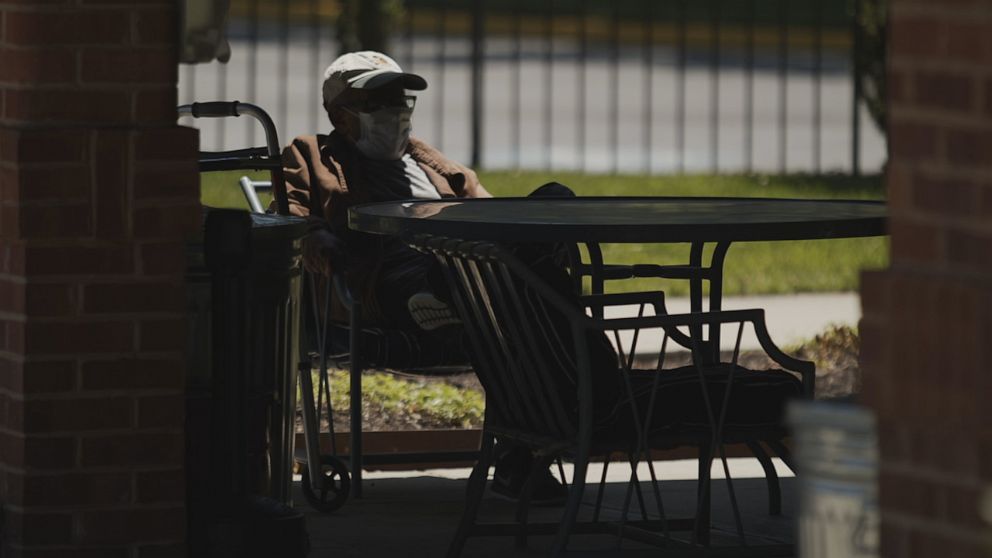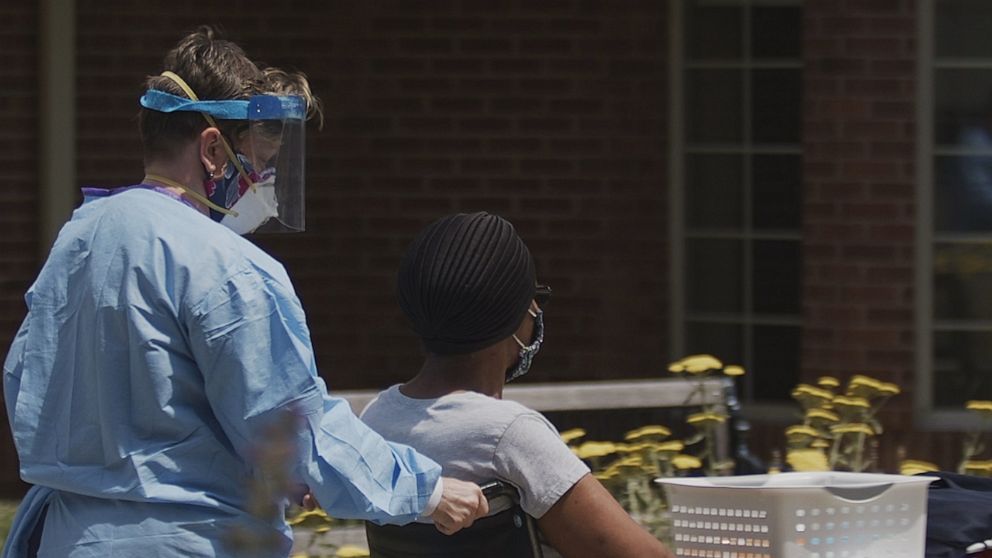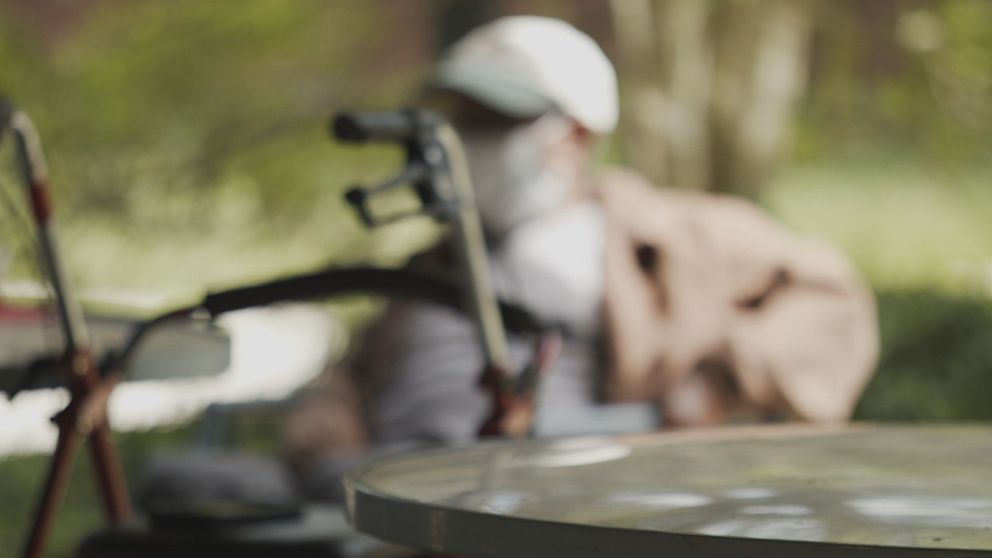Communities for the elderly devise new ways to prevent COVID-19 while battling painful isolation
Mary Winnet was overjoyed at the sight of seeing her husband. It was the first time the couple was able to reunite in two months.
“Do I get to touch you? You’re healthy?” she asked her husband before reaching out for an embrace.
Like many residents in senior living communities, Winnet and her husband were separated and placed in quarantine to keep them safe from the coronavirus, COVID-19.
But the measures meant to save their lives have also been isolating. In addition to each other, they’ve been kept apart from their other loved ones, including their daughter, Katie Nelson.
“Can you imagine living in a room that's maybe 200 square feet for two months,” Nelson said. “When you talk[ed] to them, you could hear there was gonna be a breaking point really, really soon.”

Winnet was able to reunite with her family because Thrive Senior Living Communities in Virginia, where she and her husband live, created a simple but effective plexiglass barrier to allow families to see each other while talking through a phone hook-up.
A whole range of communal living arrangements for seniors have presented significant health challenges in the age of the coronavirus. Facilities of all sorts have been searching for new ways to address those concerns in the face of an unexpected and deadly pandemic. The primary goal: keep residents in isolation in order to keep a vulnerable population safe.
“If you have people in your life that have underlying conditions or are susceptible to having COVID, [that’d] be really bad for them. So that's really scary,” Nelson said. “I want to see my people so badly, and I know that the families do, too. ... But I would still rather wait ... to make sure that these people are safe. So I mean, that's hard.”
As the pandemic continues, many communities have started experimenting with creative ways to combat their residents’ loneliness, such as allowing family members to talk to residents through closed windows, setting up chairs in entrances or setting up plastic “hug” barriers.

One facility in Maryland has developed a novel approach to monitor the health of its residents. Layhill Center in Silver Spring has partnered with medical data company Megadata to track residents’ vitals in hopes that the data they collect will eventually allow for more accurate screening before visits.
With 123 residents, Layhill Center has had 18 positive COVID-19 cases. Seven of them have died from the virus but most have fully recovered.
“We knew that it was an infectious process, and we needed to make sure that we were on board with handwashing, we were on board with utilizing the [personal protective equipment], and just the standard practice for infection control,” said Jennifer Kelly, who directs the nursing facilities at the center.
The facility has been using Megadata’s program in addition to these precautions since the onset of the pandemic, and they believe it’s been vital to saving lives.
Dr. Priya Vasdev, an internist associated with the center, said that during every shift each patient undergoes a pulse oximetry to measure oxygen in the blood.
“The concern being that pulse ox has a direct relationship to what may be going on in the lungs, and the lungs are one of the major organ systems affected by COVID-19,” Vasdev said.

Megadata president and CEO Shalom Reinman said what they found was that a patient’s oxygen levels “in most cases” was a better indicator of whether they had contracted the virus than their temperature and other symptoms, “which seemed to be later developing.”
Venus Ann McAndrews, a resident at Layhill, has an underlying health condition. She said the pulse oximetry system helped save her life.
“I thought I was a goner, for sure,” McAndrews said. “If they wouldn't have caught it when they did and got me the help that they did, I would probably have died, and that's the truth. They really saved my life by ... finding out so quick and sending me to the hospital.”
Kelly said being able to monitor the data for subtle changes in patient vitals has benefited every one of their residents because it has allowed the medical staff to react and treat them much faster, as well as isolate residents who were becoming ill much earlier.
She hopes that this monitoring system will eventually allow them to clear residents for visits on a case-by-case basis.
“It's been hard. You know, the things that you took for granted as normal, you can no longer take it for granted,” Kelly said. “Before, you can hug your patient, sit there and have a conversation without a face mask on. And now you're not doing that... The intimacy is no longer there.”
“We have to be vigilant,” she added, “and we have to make sure that we're following the standard of care right now and the practice that is required.”




